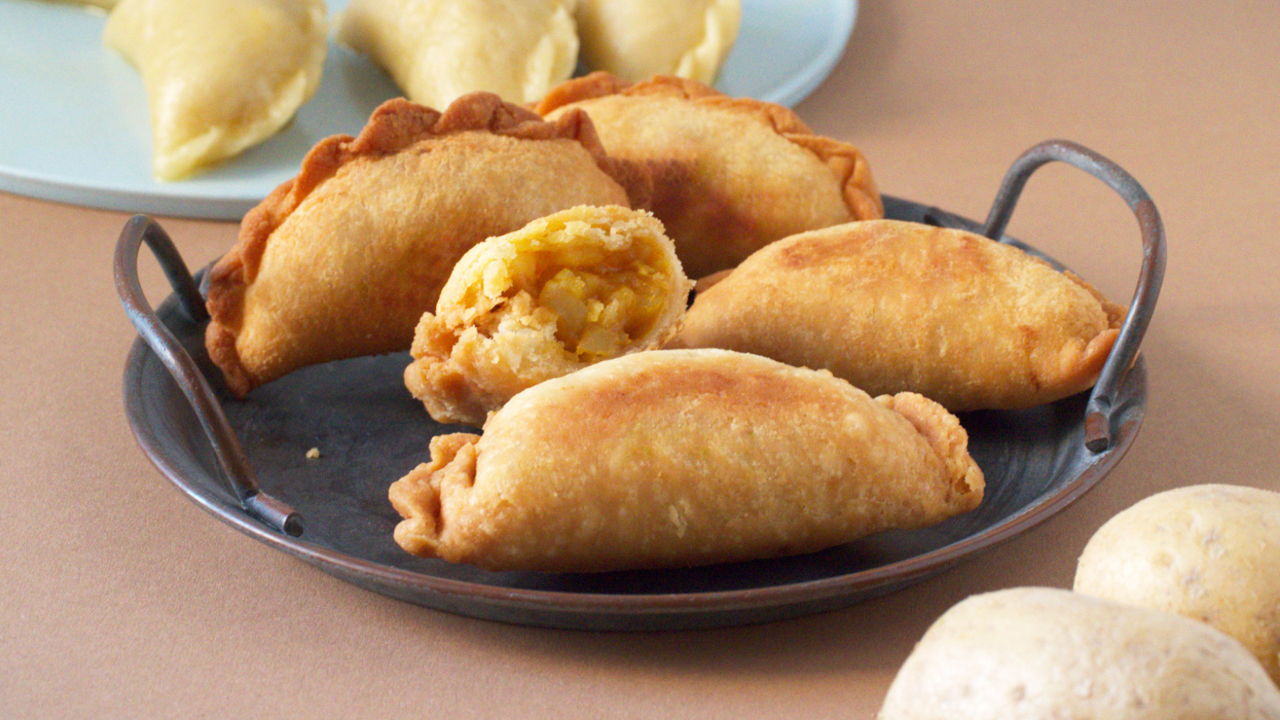Curry puff may look like another puff pastry or savoury pie but it is the unofficial king of kuih for many in Malaysia, Singapore and around the region. In these countries, curry puffs or epok-epok is a favourite during breakfast and teatime.
Freshly made, crispy and flaky deep-fried curry puffs are best eaten together with a glass of sweet tea 'Teh Tarik' when the filling is still warm.
Why should I make these curry puffs?
The crispy pastry is the reason to make these curry puffs. Many who have tasted it rave that it is one of the best they'd come across. You will notice the flakiness of the pastry and the delightful flavour as you savour every bite.
The fragrance of the filling makes the curry puff even more delectable.
Following this recipe accordingly will ensure the crispiness of the pastry is maintained throughout the day. You can prepare them in advance and will be surprised at how the pastry still remains crispy.
Why is the dough crumbly?
The pastry is the key point of a curry puff. We've taken the recipe back to the kitchen in April 2020 after reading comments from the community regarding the problems with crumbly dough.
The steps have now been updated with specific instructions. There are several important tips to be taken into consideration.
The hot oil needs to be smoking hot. Once poured into the flour mixture, immediately use a spoon to mix it thoroughly.
Use cold water to add to the oily dough. Not room temperature water but cold water from the refrigerator.
Knead evenly!
The dough will still be soft due to the hot oil. Let it cool in the refrigerator. There will be excess oil from the dough when it is removed from the refrigerator. Just knead it again before dividing into 10 or 12 balls.
Here's a video to see the dough making process in detail which uses only flour, oil and water:
How many curry puffs will this recipe yield?
It depends on the size of the curry puffs. To make 12 curry puffs, divide dough into balls of 35g each. Larger curry puffs need 40g of dough. That will yield 10 curry puffs then.
Potato filling
The potatoes need to be cooked until they are really soft and no liquid remains. Besides, be careful not to mash them as you stir. Here's a comparison of the 'before and after' cooking of the potatoes. As you can see, the amount is just nice for 10 to 12 curry puffs.
Frying curry puffs
When frying, do not use high heat or the edge of the curry puff will brown quickly. This will create an uneven pastry skin. Use low to medium heat instead. Also, do not allow one side to be fully browned before turning it over.
Continuously flip them during the frying process. This is to achieve a beautiful shade of golden brown and ensuring that the curry puffs are fried evenly.
Frozen curry puffs
After shaping the curry puffs, freeze them for at least four hours. Then, store the uncooked curry puffs in an airtight container or plastic bag in the freezer for later consumption. The frozen curry puffs do not need to be defrosted before frying or baking.
Baked curry puffs
Instead of frying the curry puffs, they can also be baked. This method is very helpful to those who are health conscious. Baked curry puffs are just as tasty and in fact, it is highly suggested as it is not as oily.
The sides may brown faster than the rest of the surface of the curry puff but it's ok. They taste just as delicious as the fried version, as seen here.
To bake the curry puffs, preheat oven at 180 degrees Celsius. Place them on a piece of baking sheet and bake for 30 minutes or until browned. Frozen curry puffs do not need to be thawed before baking.
Is curry leaves necessary?
Curry leaves are used to add a wonderful aroma to the curried potatoes. If you do not have curry leaves, substitute with one bay leaf or just omit them from the recipe.
Can meat be added to the filling?
Yes, of course. You may add diced chicken breasts if that is your preference. Just reduce the amount of diced potatoes if you do so.
Additionally, you may add a wedge of hard boiled egg which is sometimes done by some street vendors.

